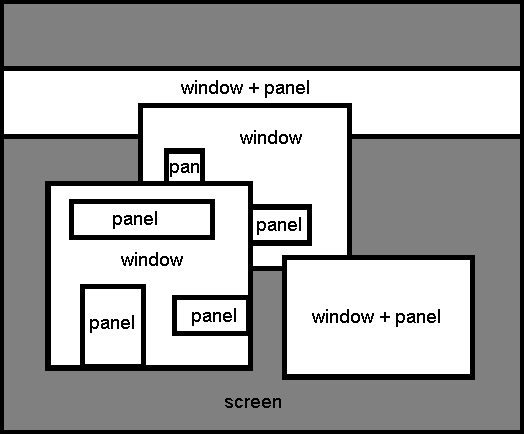





The basic concept in Panels is the panel. The panel can be considered as a virtual screen that can be written to just like a real screen. However, a panel can be larger or smaller than the real screen.
The contents of a panel are viewed through a window. It is the window associated with a panel that is actually displayed on the real screen. The window can be smaller than the actual size of the panel, in which case only part of the panel's contents are visible. The part of the panel which is visible through the window can be varied by the programmer. Any number of windows can be displayed on the screen at once, overlapping each other if necessary.
The window associated with a particular panel can either be visible on the screen (enabled) or it can be invisible (disabled). Even if the panel is disabled, it can still be written to, but its contents are not visible on the screen until the panel is enabled again. The position and size of a window on the screen can be altered at any time.
Any part of a panel can be written to or read from by a program. Also, any rectangular region of a panel can be scrolled in any direction.
The diagram below represents the relationship among screen, window and panel.



